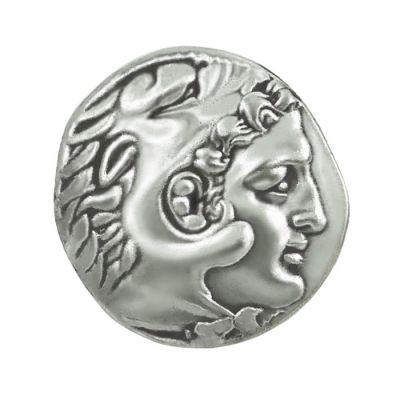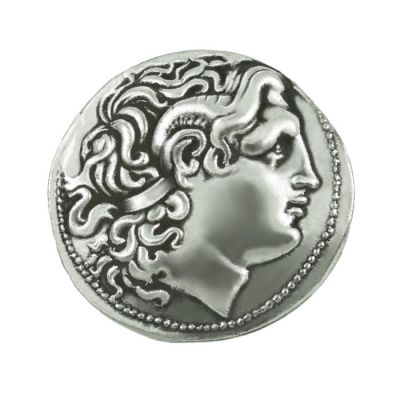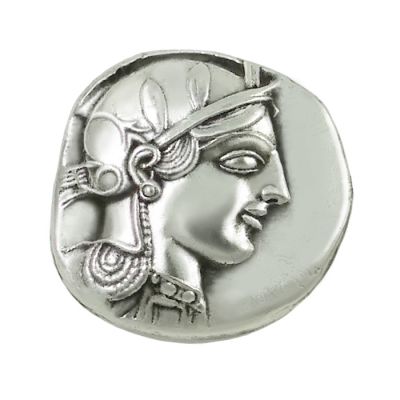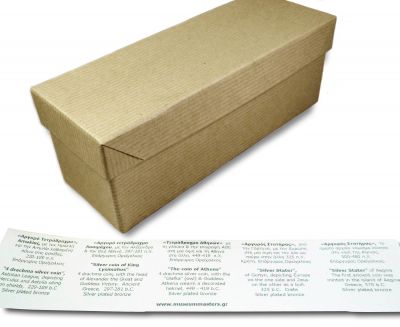Ancient Coins Set of five silver-plated copies. The set is offered in an acrylic case for protection and better presentation. The set includes, the silver tetradrachm of Athens, the silver tetradrachm of Aetolia, the silver tetradrachm of King Lysimachus of Thrace, the silver stater of Aegina and the silver stater of Gortynia. It is inspired by the ancient Greek civilization, its rich culture, history and art. A greatset of collectibles for the admiers of the ancient Greek world, but also for coin collectors.
Take a look at the rest of the coins collection.
All prices include VAT.
The ancient Athenians chose on the obverse of the silver tetradrachm of Athens(449-419 BC) to reflect goddess Athena, who also gave her name to the city and at the reverse, the symbol of the city of Athens, the owl (glauka) with an olive branch , the sacred plant of Athens and the inscription ΑΘΕ.
On the silver tetradrachm of Aetolia (220-189 BC), the Delphic shrine dedicated to personalized Aetolia, armed, sitting on pile of Gallic shields is pictured on the obverse of the coin. On the reverse, the deified hero of the Aetolians - and all of the Greeks - Hercules is depicted.
On the silver tetradrachm coin of King Lysimachus of Thrace (297-281 BC)is depicted the head of Alexander the Great with the horns of Ammon Zeus on the obverse and on the reverse, goddess Athena, carrying goddess Nike (Victory) in her hands, seated. In the field of the reverse, there were monograms and the inscription King Lysimachus, which is positioned to the right and left of goddess Athena.
On the silver stater of Aegina (500-480 BC), the symbol that was chosen for the first cuts was the sea turtle in the obverse of the coin, and on the reverse of the coin, there was an incuse square with irregular shapes.
On the silver stater of Gortynia (325 BC), Europe with a veil that covers her legs from the waist down, while she is resting on the branches of the sacred plane tree(platanus), leaning her head on her hand is depicted on the obverse. On the reverse of the coin, there is a bull, that according to the legend was Zeus, turning its head to the left.
The first coins were made of electrum in Asia Minor, an alloy of gold and silver in the late 7th BC century. In the front side of the coin were shown the respective symbols of the cities, the deities who protected the cities, mythical persons or regional products of the cities, visualizations that made recognizable their origin.
The precious metal, which was mainly silver, set the value of the coin, the small shape made it easy to carry and the symbol of each issuing authority was the guarantee of weight and authenticity. At the end of the 5th century BC, copper coins were produced, in order to be used for the small daily transactions.
Original ancient Greek coins are exhibited at the Numismatic Museum in Athens.
No posts found



















